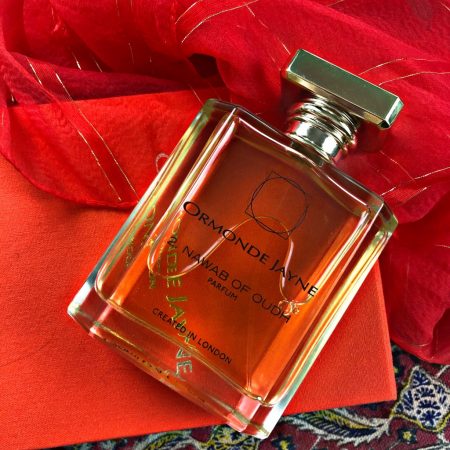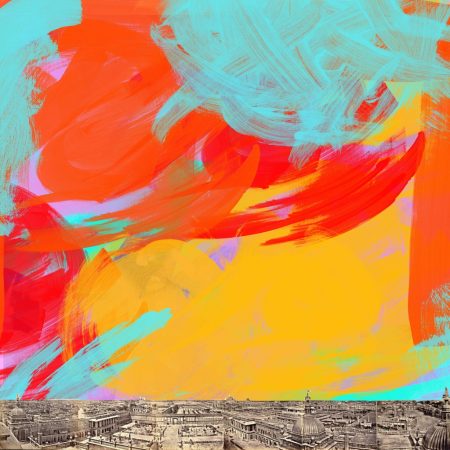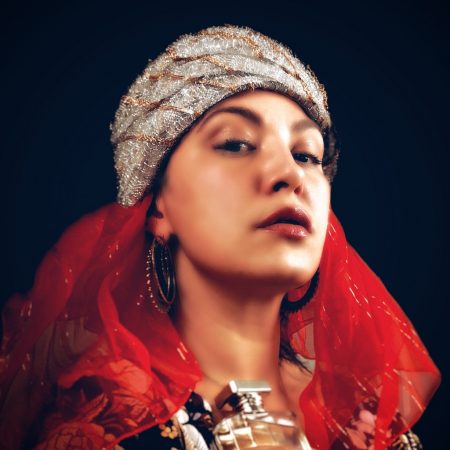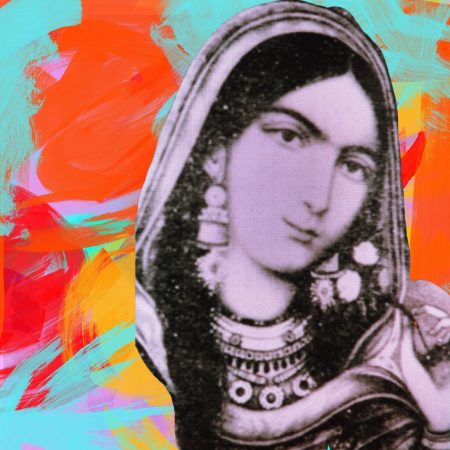
Ormonde Jayne Nawab of Oudh. Photo, creative direction, and digital editing by @a_nose_knows
If you ever used “mogul”, in any context, brace yourself for some etymology.The word comes from Mongolian roots (“monghyol/ mongol”, which simply means “Mongolian”, deriving from “mong-”, which means “brave”). Persians adopted it and adapted it to “Mughul” (read with a glottic gh), and offered asylum to Humayun, as well as support maintaining domain over the Northern parts of India (initially conquered by Humayun’s father, Bobar, who in turn was a descendant of Timur and Gengis. Yes, THAT Timur, and THAT Gengis).
Humayun hung out with the Persians, mastered the art of Taarof, and languished in some good Rumi until, all “Persianized”, went back and imposed his adoptive culture as the norm for his inherited territories. In the end, the empire founded-by-Mongols-but-named-”Mongol”-in-Persian (seriously, how confusing is that?!?) became known as “Mughal”. And since the Mughal empire was, at its greatest extent, one of the largest in the history of South Asia, thus became its leaders some of the strongest, coolest gang who lived.

Panorama of Lucknow, current capital of Awadh, taken in 1858. Source: Wikipedia. Photo collage, creative direction, and digital editing by @a_nose_knows for Ormonde Jayne Nawab of Oudh
Now, try to imagine the folks who raised against the strongest, coolest gang…and won. Much was happening everywhere in the world in the 17th, 18th, and 19th centuries, and the commercial press and telegraph messaging made sure that news traveled wide and fast; unfathomable, hence, that so little has been covered about the glorious, the rogue, the tough leaders from Awadh. Awadh, known as the granary of India, was strategic for the control of the Doab plains and able, across the centuries, to maintain independence against local groups, the British, and the Afghans. And as the Mughal power fragmented more and more, so did Awadh’s power grow—until Saadat Khan, the first Nawab of Awadh, established a capital city and started the shift of government, academics, court, and high culture from Delhi to Faizabad… in Persian, which supported the independence movement and maintained a forever-rebel, forever-cool line of Nawabs.

dana with Nawab of Oudh Photo collage, creative direction, and digital editing by @a_nose_knows
Writers are often set free to discover and interpret, through personal lenses, creative efforts of others; in contrast, documentarists-first (like I am) feel confined by factual specifics, when present, and have to correlate. So I sniffed Nawab of Oudh took notes, and got to work trying to figure out where the connection was between what I smelled (bright, spunky, cooling, communicative) and the noble line of rulers of Awadh (visionaries, fighters, rebels, pioneers). I found it in Begum Hazrat Mahal, the second-to-last Nawab… and a woman.

Begum Hazrat Mahal. Photo collage, creative direction, and digital editing by @a_nose_knows for Ormonde Jayne Nawab of Oudh
Nawab of Oudh is everything you DON’t expect to smell, while making perfect sense in its perfumistic context (and, now, a historical one as well). Where one would expect heaviness there’s air, and instead of pungency—balance; crystalline resin is replaced with wetness, and hotness with cool; herbal becomes grassy, floral oils become live flowers, and strong woodiness—instead of stark, hidden. As with many Ormonde Jaynes, this is blended to the point it indiscriminately inglobates all notes and makes them, through a feat I look for more and more direly, fuse with your skin; from there it diffuses like a second breath, effortlessly and unapologetically present. Hazrat, after all, means “presence”- a title of charm and nobility to be addressed by with consistency but not much other ritual, like “Sire”, or “your highness”, or “your Honor”…. a suit for fearless Begum, the courtesan-came-Nawab who, once, led a woman’s army).
Official notes: green notes, bergamot, orange absolute, cardamom, aldehyde, rose, magnolia, orchid, pimento, bay, cinnamon, hedione, ambergris, musk, vetiver, labdanum, oudh.
Other perceived notes: lavender, powder, pepper, geranium, coriander, white tea, ginger, mango.
Disclaimer: Nawab of Oudh provided for review by the company. Thank you so much.
– dana sandu, Sr. Contributor

Linda Pilkington of Ormonde Jayne on the Orient Express with perfumer Geza Schoen 2012 photo from Ormonde Jayne
Editor’s Note: Ormonde Jayne Nawab of Oudh is from the four corners of the earth collection, which also includes Montebaco (Sebastian’s video review), Ida reviewed Qi and Tsarina. Linda Pilkington, founder, perfumer and creative director of Ormonde Jayne launched “The Four Corners of the Earth”, a quartet of perfumes which pays homage to the different parts of the world that have inspired her and acknowledge the rich diversity of Linda’s hometown, London (Geza Schoen is the perfumer in collaboration with Linda Pilkington for all four in the series. Of note: Today January 26th, Republic Day in India where the Nawabs were. Michelyn
Thanks to the generosity of Ormonde Jayne and Europerfumes, we have a tester of Nawab of Oudh for one registered reader in the US ONLY (you must register on our site or your comment will not count). To be eligible, please tell us what you enjoyed or found interesting about dana’s review, if you’ve tried Ormonde Jayne perfume before. and where you live. Draw closes January 29, 2020
Available at @thescentroom and the Intensivo version is available @twistedlily @aedes_perfumery and @luckyscent.
This is our Privacy and Draw Rules Policy
Follow us on Instagram @cafleurebon @a_nose_knows @ormondejayne @official_europerfumes
